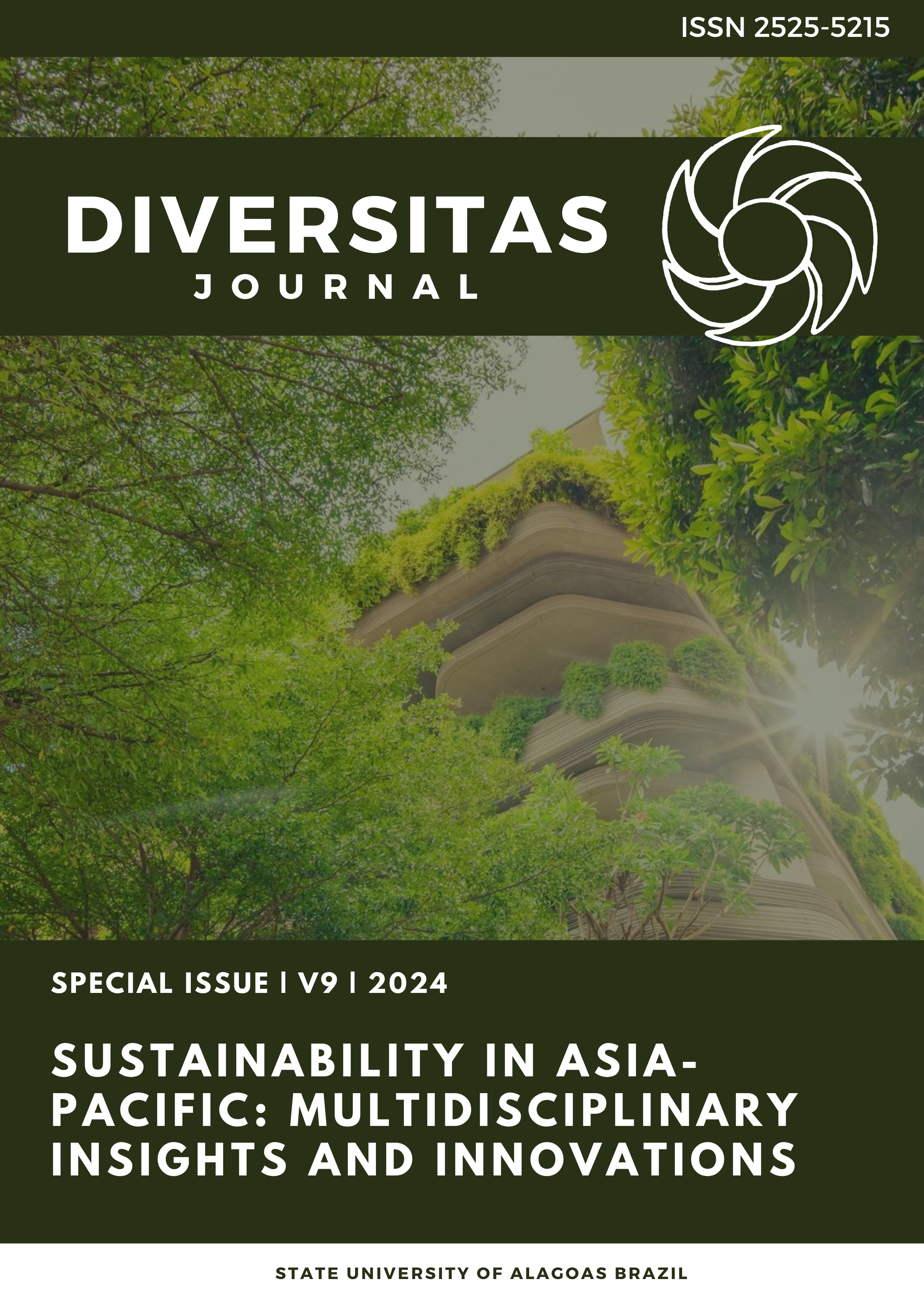Enhancing personal financial literacy among young professionals: an impact study
DOI:
https://doi.org/10.48017/dj.v9i1_Special.2943Keywords:
personal financial literacy, young professionals, seminar-workshop, ANCOVAAbstract
This impact study intends to determine the significant relationship between the posttest score and personal finance topic controlling for the pretest score. From 2019 to 2023, the Business Cluster initiated a program to enhance the Personal Financial Literacy of Young Professionals through the seminar-workshop using the Quasi pretest-posttest experimental design. The Analysis of Covariance (ANCOVA) results proves a significant relationship exists between the posttest score and finance topic controlling for the pretest score. Moreover, this study confirmed that the seminar-workshop creates an environment conducive to active learning and engagement, positively impacting personal financial learning outcomes. Using the posthoc test proves that Investment is significantly higher than Budgeting, Decision, and Insurance, suggesting that Young Professionals are more interested in increasing their financial literacy investment than in other financial topics.
Metrics
References
Bank of America. (2018). Bank of America Better Money Habits Millennial
Report. Retrieved from https://about.bankofamerica.com/assets/pdf/2018- Millennial-Report.pdf
Barkley, E. F., Cross, K. P., & Major, C. H. (2014). Collaborative learning techniques: A handbook for college faculty. John Wiley & Sons.
Bonate, P. L. (2000). Analysis of pretest-posttest designs. CRC Press.
Borelli, J. L., Somers, J. A., West, T. V., Coffman, D. L., & Clark, L. A. (2016). The relevance of cognitive abilities for success in personal finance: A review and meta-analysis. Journal of Applied Research in Memory and Cognition, 5(1), 37-48.
CFA Institute. (2018). 2018 CFA Institute Global Market Sentiment Survey. Retrieved from
https://www.cfainstitute.org/-/media/documents/survey/2018-cfa-global-market-sentiment-survey.ashx
Campbell, D. T., & Stanley, J. C. (2015). Experimental and quasi-experimental designs for
research. Ravenio Books.
Chang, Y., Serido, J., Shim, S., & Tang, C. (2018). A randomized controlled trial of financial
coaching: A replication study. Journal of Financial Counseling and Planning, 29(1), 3-16.
Collins, J. M., & Krentz, K. A. (2017). Evaluating financial education programs. Journal of Extension, 55(5), 1-7.
Consumer Financial Protection Bureau. (2018). Using financial apps. Retrieved from
https://www.consumerfinance.gov/about-us/blog/using-financial-apps/
Duff, A., Boyle, E., Dunleavy, K., & Ferguson, J. (2013). The relationship between personality,
approach to learning and academic performance. Personality and Individual
Differences, 54(7), 861-866.
Hanna, S. D., & Lindamood, S. (2010). The effect of financial education on the financial knowledge and behavior of high school students. Journal of Consumer Affairs, 44(2), 336-357.
Harris, A. D., & Brown, R. (2010). Designs for evaluating interventions: Classic and innovative approaches. Springer Science & Business Media.
Huston, S. J. (2010). Measuring financial literacy. The Journal of Consumer Affairs, 44(2), 296-316.
Fernandes, D., Lynch Jr, J. G., & Netemeyer, R. G. (2014). Financial literacy, financial
education, and downstream financial behaviors. Management Science, 60(8), 1861-1883.
Freeman, S., Eddy, S. L., McDonough, M., Smith, M. K., Okoroafor, N., Jordt, H., & Wenderoth, M. P. (2014). Active learning increases student performance in science, engineering, and mathematics. Proceedings of the National Academy of Sciences, 111(23), 8410-8415.
Judd, C., & McClelland, G. (1989). Data analysis: A model Comparison approach Harcourt.
Kahneman, D., & Tversky, A. (1979). Prospect theory: An analysis of decision under risk. Econometrica, 47(2), 263-292.
Kim, J., Garman, E. T., & Sorhaindo, B. (2018). Relationship between financial socialization and financial behaviors: A family financial socialization and financial behaviors: A family research approach. Journal of Financial Counseling and Planning, 29(1), 17-31.
Klapper, L., & Panos, G. A. (2011). Financial literacy and retirement planning: The Russian case. Journal of Pension Economics & Finance, 10(4), 599-618.
Lusardi, A., Mitchell, O. S., & Curto, V. (2008). Financial literacy among the young. Journal of Consumer Affairs, 42(2), 208-235.
Lusardi, A., & Mitchell, O. S. (2014). The economic importance of financial literacy: Theory and evidence. Journal of Economic Literature, 52(1), 5-44.
Madrian, B. C., & Shea, D. F. (2001). The power of suggestion: Inertia in 401(k) participation and savings behavior. The Quarterly Journal of Economics, 116(4), 1149-1187.
McDaniel, M. A., Roediger, H. L., & McDermott, K. B. (2007). Generalizing test-enhanced learning from the laboratory to the classroom. Psychonomic Bulletin & Review, 14(2), 200-206.
National Endowment for Financial Education. (2016). Financial Capability in the United States 2016. Retrieved from https://www.nefe.org/Portals/0/WhatWeProvide/PrimaryResearch/PDF/NEFE%20Financial%20Capability%20Study%20Report%20WEB.pdf
OECD. (2016). Improving Financial Literacy: Analysis of Issues and Policies. Retrieved from https://www.oecd-ilibrary.org/docserver/9789264236923-en.pdfexpires=1625798316&id=id&accname=guest& checksum=61B1509977041F739CD6A4B6D22E78C1
Overall, J. E. (1993). the use of inadequate corrections for baseline imbalance remains a serious problem. Journal of Biopharmaceutical Statistics, 3(2), 271-276.
PwC. (2019). Employee Financial Wellness Survey. Retrieved from
Senn, S. (1994). Testing for baseline balance in clinical trials. Statistics in medicine, 13(17), 1715-1726.
Shadish, W. R., Cook, T. D., & Campbell, D. T. (2002). Experimental and quasi-experimental designs for generalized causal inference. Houghton Mifflin.
Thaler, R. H., & Sunstein, C. R. (2008). Nudge: Improving decisions about health, wealth, and happiness. New Haven, CT: Yale University Press.
TIAA. (2017). TIAA Voices of Experience: Insights From Older Americans on Financial Literacy and Retirement. Retrieved from https://www.tiaa.org/public/pdf/voices_of_experience.pdf
Downloads
Published
How to Cite
Issue
Section
License
Copyright (c) 2024 Montaño Vicente Salvador, Rosalia Gabronino

This work is licensed under a Creative Commons Attribution 4.0 International License.
The Diversitas Journal expresses that the articles are the sole responsibility of the Authors, who are familiar with Brazilian and international legislation.
Articles are peer-reviewed and care should be taken to warn of the possible incidence of plagiarism. However, plagiarism is an indisputable action by the authors.
The violation of copyright is a crime, provided for in article 184 of the Brazilian Penal Code: “Art. 184 Violating copyright and related rights: Penalty - detention, from 3 (three) months to 1 (one) year, or fine. § 1 If the violation consists of total or partial reproduction, for the purpose of direct or indirect profit, by any means or process, of intellectual work, interpretation, performance or phonogram, without the express authorization of the author, the performer, the producer , as the case may be, or whoever represents them: Penalty - imprisonment, from 2 (two) to 4 (four) years, and a fine. ”


















